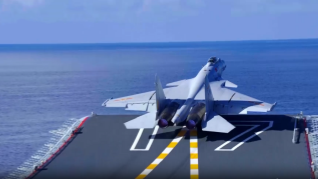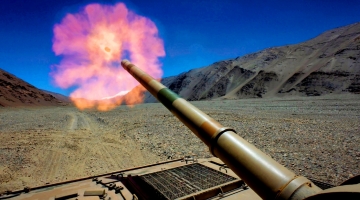By Hu Chengcheng
US President Donald Trump and Secretary of Defense Pete Hegseth announced on April 7 local time plans to propose a defense budget totaling $1 trillion. This figure represents a significant increase from the $895 billion in defense funding approved by the US Congress for fiscal year 2025, setting a new historical record.
In February this year, President Donald Trump ordered the Department of Defense to draft large-scale budget cuts, aiming to reduce the defense budget by 8 percent annually over the next five years. Yet now, he is making a high-profile push for its first-ever $1 trillion defense budget. Why does he go back on his words? What impact will the proposed $1 trillion US defense budget have on international security?
Chinese military observer Teng Jianqun pointed out that during the early days of Donald Trump's presidency, he attempted to cut the massive defense spending to ease fiscal deficit pressures. However, as the US adjusted its strategic posture, he came to believe that increasing the defense budget was the key to maximizing national interests. First, the US seeks to maintain a powerful military force to reinforce its global hegemony and realize the goal of "Making America Great Again." Second, by expanding its military and preparing for war, the US aims to prompt other countries to divert limited resources into defense spending, thereby undermining their productive capacities and gaining the upper hand in major-power competition. Third, the US is ramping up defense spending as a means of diverting taxpayer money to serve the agendas of powerful interest groups.
At present, the US has yet to clarify whether the proposed budget is solely designated for defense or part of a broader national security allocation that includes other departments. According to Teng Jianqun, the additional funds are expected to be primarily channeled into military expansion and combat preparedness. The first is to modernize weapons and equipment. Many of the mainstay fighter jets of the US Air Force (USAF) were developed during the final years of the Cold War. The US Navy is also facing a shortage of aircraft carriers, which directly affects the US military's global deployment and rapid response capabilities. Meanwhile, although projects such as nuclear-powered ballistic missile submarines and strategic bombers have been launched, their commissioning timelines continue to be delayed. These factors point to a serious problem of aging weapons systems across both conventional and strategic forces of the US military. The second is to achieve breakthroughs in key areas such as information warfare and cyber warfare. The US military believes that capabilities in these domains will be decisive in winning future wars.
While the Pentagon has been pushing for a substantial increase in the defense budget, some US media outlets have revealed that it plans to withdraw around 10,000 American troops from Eastern Europe. This plan has been interpreted by external observers as an attempt by the US to reduce its defense spending in Europe, and even as a potential relinquishment of its leadership in European defense. In response, Teng Jianqun believes that the US troop withdrawal is merely a routine adjustment of conventional military deployments and does not signify a strategic pullback in its European direction.
He further explained that the forces being withdrawn from Eastern Europe are primarily logistical support units deployed there after the outbreak of the Russia-Ukraine conflict and that the US intends to make adjustments to its troop deployment. The significant increase in the US defense budget will partially be allocated to strengthening its military presence in Europe, including the deployment of new weapons systems and the establishment of new military bases, to reinforce its leadership in European defense. Under the influence of the US military expansion, European countries will be compelled to increase their defense spending, while also becoming more tightly bound to the US chariot. Therefore, the adoption of the high-handed approach of using force by the US and the continual increase of its defense budget are ultimately aimed at sparking a new global arms race.
Editor's Note: Originally published on military.cnr.cn, this article is translated from Chinese into English and edited by the China Military Online. The information and opinions in this article do not necessarily reflect the views of eng.chinamil.com.cn.













